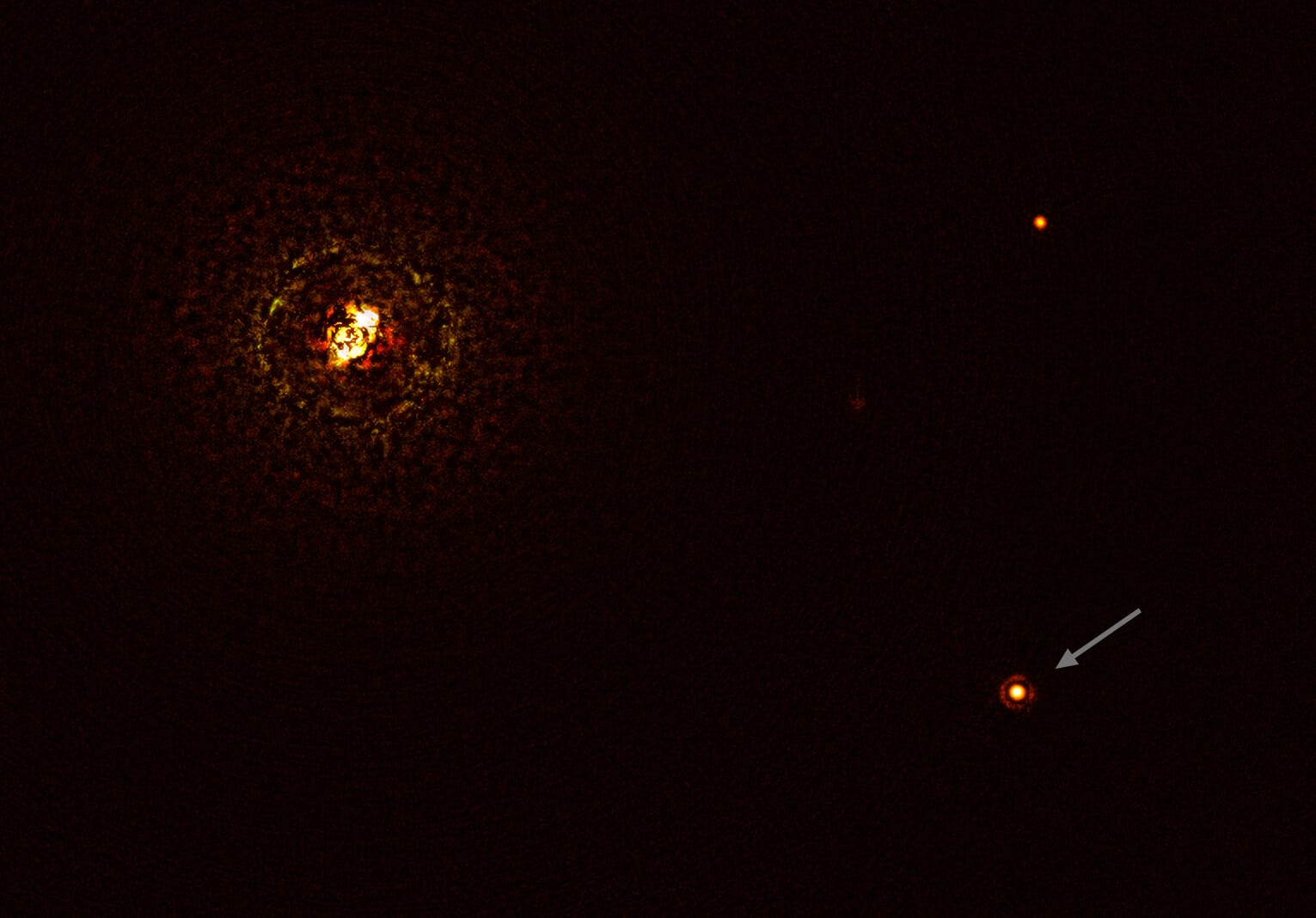
The universe continues to amaze astronomers.
About 325 light-years away from Earth, in the constellation Centaurus, we find the binary star b Centauri – which can be seen with the naked eye in the night sky. This binary star has at least six times the mass of the Sun. Many therefore thought that no planets could be born in such heavy and hot star systems. Wrongly, as it turns out.
Special discovery
Using the SPHERE instrument on ESO’s Very Large Telescope, researchers have discovered that the binary star b Centauri does harbor a planet. And that’s pretty special. Until now, no planets had been observed around stars of more than three solar masses. b Centauri – with its six solar masses – is therefore by far the most massive star system where a planet has been found. “The discovery of a planet at b Centauri is very exciting,” said researcher Markus Janson. “This completely changes our understanding of massive stars as planet hosts.”

This image shows b Centauri, the most massive star pair to date with a planet, and its giant planet b Centauri b. This is the first time astronomers have observed a planet orbiting a binary star as massive and hot as this one. Image: ESO/Janson et al.
Binary star b Centauri, like most massive stars, is very hot. The main star is a so-called type B star that is more than three times as hot as our sun. These scorching temperatures cause the star to bombard its surroundings with large amounts of ultraviolet and X-rays. In addition, the high mass and heat of type B stars have a huge influence on the surrounding gas. This would prevent planets in such systems from ‘germinating’. “Type B stars are generally considered to be quite destructive and dangerous environments,” Janson says. “It was therefore assumed that the formation of large planets in their immediate vicinity would be extremely difficult.”
The planet
Indeed, we thought so. But now it turns out that b Centauri miraculously still harbors a planet. The newly discovered planet — called Centauri b b — is just as extreme as its parent stars. For example, it has ten times the mass of planet Jupiter in our own solar system, making it one of the most massive planets ever discovered. In addition, b Centauri b has an insanely wide orbit, orbiting the binary star a hundred times the distance from Jupiter to the sun. This makes the planet one of the widest orbits ever seen.
weird world
It means that the newly discovered planet is a peculiar one. “The planet of b Centauri is a strange world in an environment that is completely different from what we are used to here on Earth and in our solar system,” said study researcher Gayathri Viswanath. “It’s a harsh environment, dominated by extreme radiation, where everything takes place on a huge scale: the stars are bigger, the planet is bigger and the distances are greater.” According to the researchers, that wide orbit could have been the reason that the planet saw the light of day in such an extreme system.
Rediscovery
While the credit of the discovery belongs to the SPHERE instrument on ESO’s Very Large Telescope, SPHERE is not the first instrument to image b Centauri b. In the study, the researchers looked up archive data about the b Centauri system. The ash flows then surprisingly discovered that the planet had been recorded more than 20 years ago using the ESO 3.6-metre telescope, although it was not yet recognized as a planet at the time.
Research on the newly discovered planet b Centauri b continues. Because with the upcoming Extremely Large Telescope and upgrades to the Very Large Telescope, the ash currents hope to learn more about the planet’s formation and properties. “It will be an intriguing job to find out how the formation of this planet, which is still a mystery, has happened,” Janson concludes.
Source material:
“ESO telescope brings planet into heaviest star pair to date” – ESO
Image at the top of this article: ESO/L. calcada